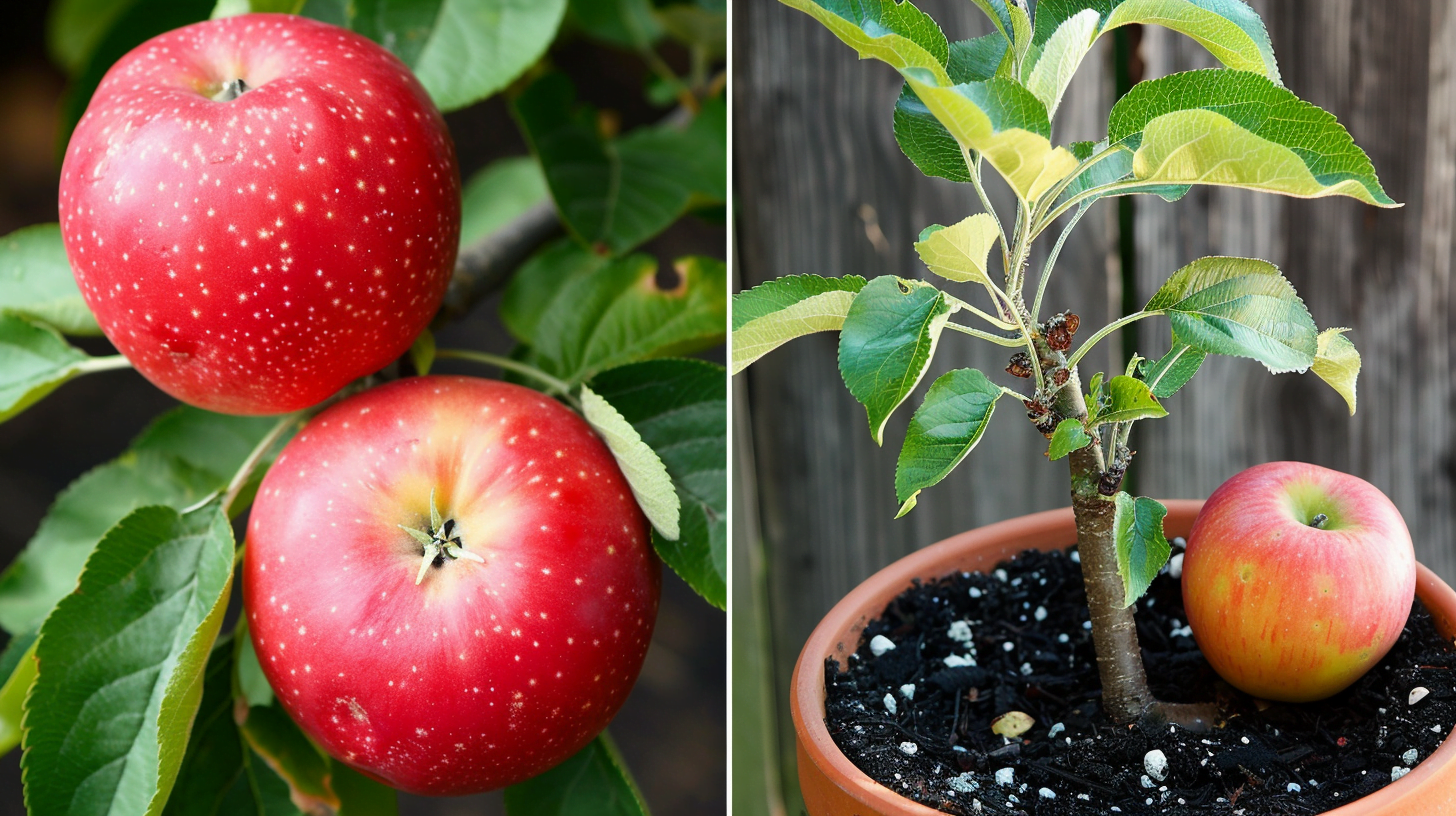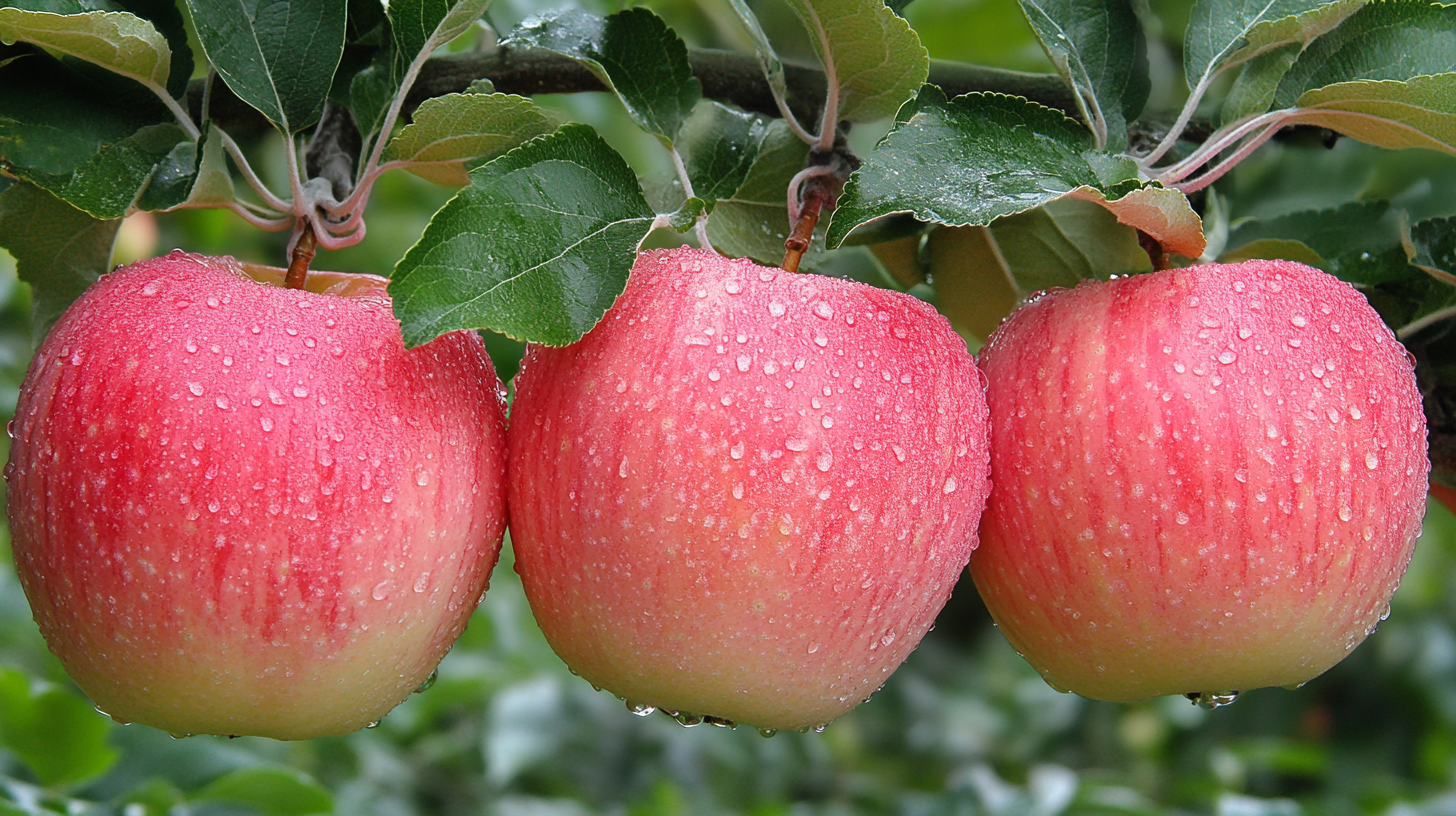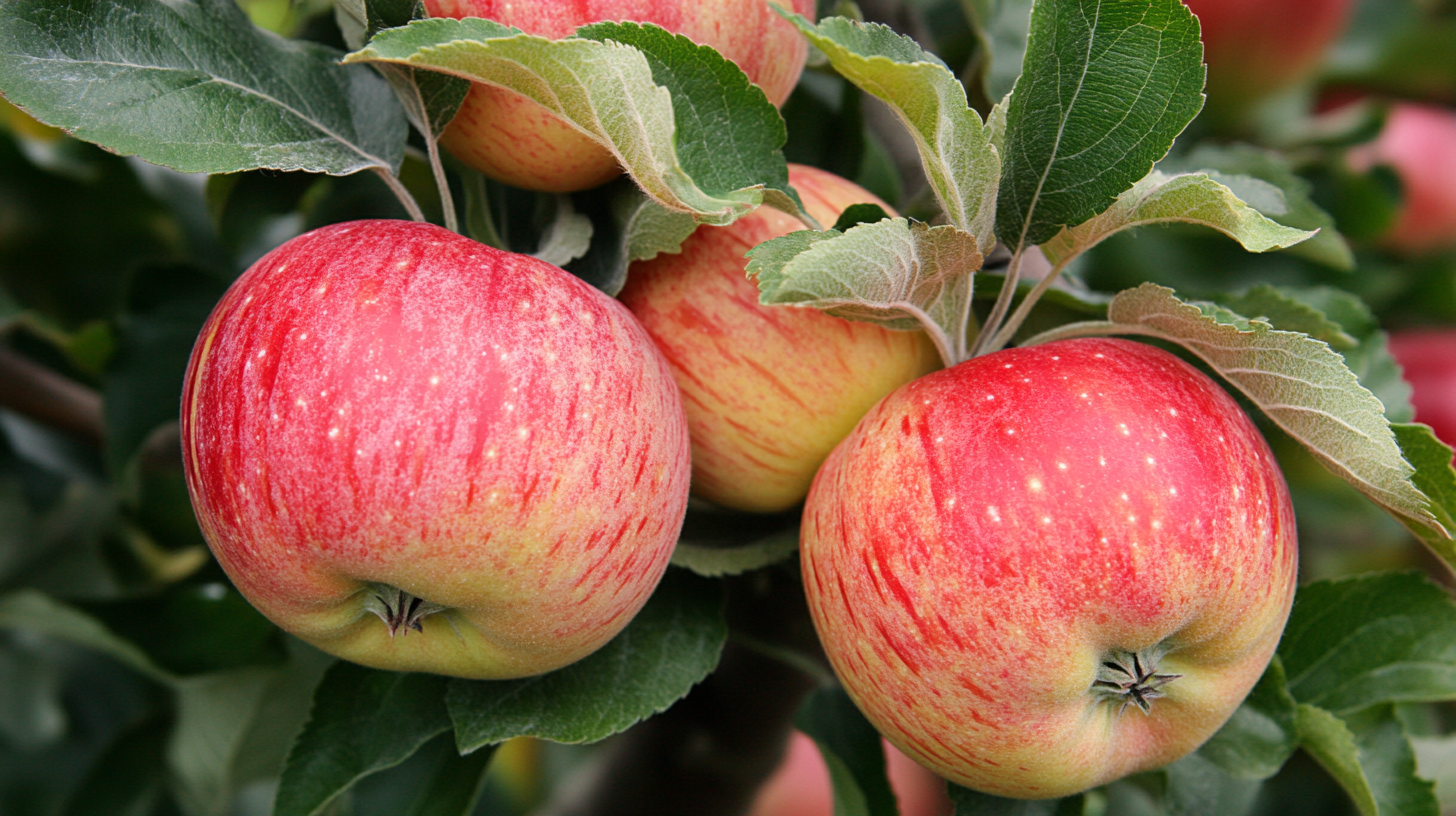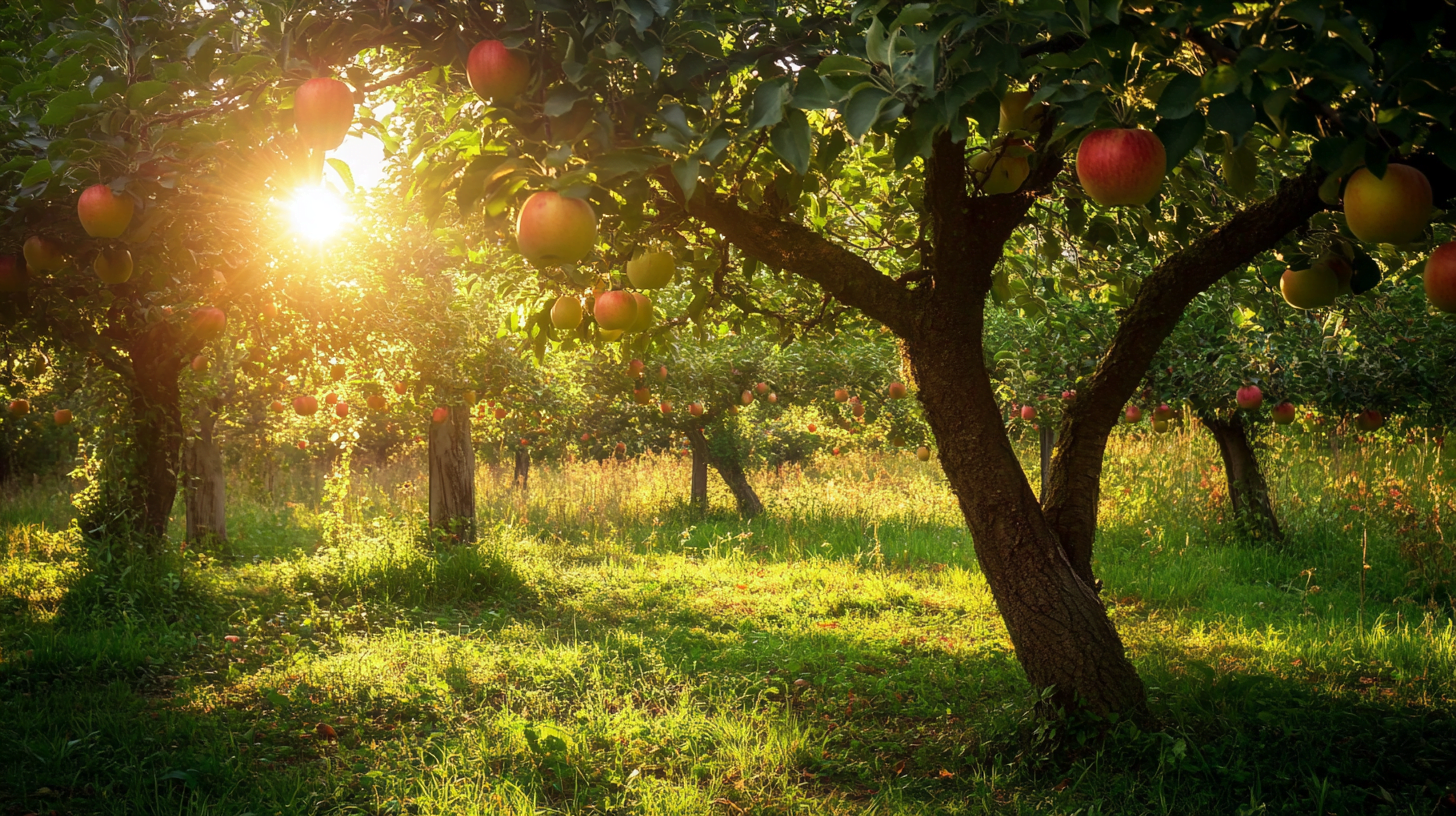Beautiful Plants For Your Interior

Table of Contents
Growing an apple tree from seed can be a rewarding and educational experience. However, it requires patience, knowledge, and a bit of luck. This comprehensive guide will walk you through the entire process, from understanding the genetics of apple trees to planting, caring for, and troubleshooting your seed-grown apple tree.
Why Apple Trees Don’t Grow True to Seed
Apple trees grown from seed often don’t produce fruit identical to the parent tree. This is due to the genetic variability in apple seeds. Each seed contains a unique combination of genes from its parent trees, leading to significant differences in fruit quality, taste, and tree characteristics. Unlike grafted trees, which are clones of the parent tree, seed-grown trees can be unpredictable.
Genetic Variability in Apple Seeds
Apple seeds are the result of cross-pollination between different apple varieties. This genetic mixing means that the seeds from a single apple can produce trees with a wide range of characteristics. For example, you might plant seeds from a sweet, juicy apple and end up with trees that produce tart or even inedible fruit.
Differences Between Seed-Grown and Grafted Trees
Grafted apple trees are created by attaching a branch (scion) from a desired apple variety onto a rootstock. This method ensures that the new tree will produce fruit identical to the parent tree. In contrast, seed-grown trees are genetically unique and may not produce the same quality or type of fruit.
Steps to Grow an Apple Tree from Seed
Growing an apple tree from seed involves several steps, from selecting and preparing the seeds to planting and caring for the young tree. Here’s a detailed guide to help you through the process.
Selecting and Preparing Seeds
- Choosing the Right Apples: Start by selecting apples from a variety known for its desirable traits. Organic apples are preferable as they are less likely to have been treated with chemicals that could affect seed viability.
- Cleaning and Drying the Seeds: Remove the seeds from the apple and rinse them thoroughly to remove any fruit residue. Dry the seeds on a paper towel for a few days.
Cold Stratification Process
Cold stratification is essential for apple seeds to break dormancy and germinate. This process mimics the natural winter conditions that seeds would experience outdoors.
- Importance of Stratification: Without cold stratification, apple seeds are unlikely to germinate.
- Step-by-Step Guide:
- Place the cleaned seeds in a damp paper towel.
- Put the paper towel in a plastic bag and seal it.
- Store the bag in the refrigerator for 6-8 weeks.
How to Plant Apple Seeds
Once the seeds have undergone cold stratification, they are ready to be planted.
Potting the Seeds
- Choosing the Right Soil and Containers: Use a well-draining potting mix and small pots or seed trays.
- Planting Depth and Spacing: Plant the seeds about 1/2 inch deep and space them at least 2 inches apart.
Germination and Early Care
- Watering and Sunlight Requirements: Keep the soil moist but not waterlogged. Place the pots in a sunny location or under grow lights.
- Protecting Seedlings from Pests: Use fine mesh or netting to protect the young seedlings from pests like birds and insects.
When and How to Transplant Apple Seedlings
Transplanting is a critical step in the growth of your apple tree. Proper timing and preparation are essential for successful transplantation.
Timing the Transplant
- Best Seasons for Transplanting: Spring and fall are ideal times for transplanting apple seedlings.
- Signs That Seedlings Are Ready: Seedlings are ready to be transplanted when they have at least 4-6 true leaves and are about 6-12 inches tall.
Preparing the Planting Site
- Soil Preparation and Spacing: Choose a sunny location with well-draining soil. Dig a hole twice the size of the root ball and mix in compost or organic matter.
- Protecting Young Trees from Environmental Stress: Use mulch to retain moisture and protect the roots. Consider using tree guards to protect against pests and extreme weather.
Caring for Your Apple Tree
Long-term care is crucial for the health and productivity of your apple tree. This includes proper watering, fertilizing, pruning, and training.
Watering and Fertilizing
- Watering Schedules and Techniques: Water young trees regularly, especially during dry periods. Mature trees need deep watering once a week.
- Types of Fertilizers and Application Methods: Use a balanced fertilizer in early spring and mid-summer. Organic options like compost and manure are also beneficial.
Pruning and Training
- Importance of Pruning for Healthy Growth: Pruning helps shape the tree, remove dead or diseased branches, and improve air circulation.
- Techniques for Shaping and Training the Tree: Use the central leader system for a strong structure. Prune in late winter or early spring before new growth begins.
Troubleshooting Common Problems
Growing apple trees from seed can come with challenges. Here are some common issues and how to address them.
Pests and Diseases
- Identifying and Managing Common Pests: Common pests include aphids, apple maggots, and codling moths. Use organic insecticides or introduce beneficial insects like ladybugs.
- Preventing and Treating Diseases: Apple trees are susceptible to diseases like apple scab, fire blight, and powdery mildew. Regularly inspect your tree and use appropriate fungicides or organic treatments.
Environmental Stress
- Dealing with Drought, Frost, and Poor Soil Conditions: Mulch around the base of the tree to retain moisture. Use frost blankets during unexpected cold snaps. Amend poor soil with organic matter to improve fertility and drainage.
What to Expect from Seed-Grown Apple Trees
Growing apple trees from seed requires patience, as it can take several years for the tree to mature and produce fruit.
Time to Fruit Production
- Typical Timelines for Fruiting: Seed-grown apple trees can take 6-10 years to produce fruit.
- Factors That Influence Fruiting Time: Tree health, care practices, and environmental conditions all play a role in how quickly your tree will bear fruit.
Quality of Fruit
- Variability in Fruit Quality and Taste: The fruit from seed-grown trees can vary widely in taste, size, and quality.
- Potential Uses for Less Desirable Fruit: Even if the fruit isn’t ideal for eating fresh, it can be used for making cider, applesauce, or baking.

Other Methods of Growing Apple Trees
If growing apple trees from seed seems too unpredictable, consider other methods like grafting or purchasing saplings.
Grafting and Budding
- Overview of Grafting Techniques: Grafting involves joining a scion from a desired apple variety to a rootstock. This method ensures the new tree will produce identical fruit to the parent tree.
- Benefits of Grafting Over Seed-Growing: Grafted trees produce fruit more quickly and reliably than seed-grown trees.
Purchasing Saplings
- Advantages of Buying Nursery-Grown Trees: Nursery-grown trees are typically grafted and will produce consistent, high-quality fruit.
- How to Choose the Right Sapling for Your Garden: Look for healthy, disease-free saplings with a strong root system. Consider the tree’s size, growth habit, and fruiting characteristics.
Conclusion: Is Growing Apple Trees from Seed Worth It?
Growing apple trees from seed can be a fulfilling project, but it requires patience and a willingness to accept variability in the results. While seed-grown trees may not produce fruit identical to the parent tree, the process offers valuable learning experiences and the potential for unique and interesting fruit.
Frequently Asked Questions
Common Questions About Growing Apple Trees from Seed
- Can I grow an apple tree from any apple seed?
- Yes, but the resulting tree may not produce fruit identical to the parent apple.
- How long does it take for an apple tree grown from seed to bear fruit?
- Typically, 6-10 years.
- Do I need to graft my apple tree?
- Grafting is not necessary but can ensure consistent fruit quality and faster production.
By following this guide, you’ll be well on your way to growing your own apple tree from seed. Enjoy the journey and the fruits of your labor!


